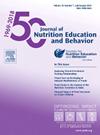DC食品零售景观评估:按社区和零售网点类型对健康和不健康食品获取的评估
IF 2.3
3区 医学
Q2 EDUCATION, SCIENTIFIC DISCIPLINES
引用次数: 0
摘要
食品不安全影响了超过13%的美国家庭,在收入低于联邦贫困线185%的家庭中,这一比例超过33% (rabbit et al., 2024)。在华盛顿特区,全市68家提供全方位服务的杂货店中,只有4家位于低收入区(Jones &;辛普森,2023)。获得负担得起的健康食品的机会有限,大大加剧了健康差距。对食品零售环境的研究可以洞察健康饮食的障碍,为零售食品政策提供信息,并为未来的健康食品环境和评估建立基准。目的研究华盛顿特区健康食品和不健康食品货架空间的获取和数量差异。研究设计、环境、参与者这项横断面研究包括华盛顿特区的128家食品零售店。商店被分类为:提供全方位服务的杂货店、中小型食品店、健康街角商店、便利店或药店。收集的数据测量了五种健康食品和三种不健康食品的货架长度/类型。货架类型包括过道、端盖、地板展示和收银台。研究人员通过记录累积的货架空间和物品出现的位置数量来测量暴露程度。可测量的结果/分析分析包括:1)跨商店类型的健康/不健康食品线性货架空间;2)货架空间在商店类型的地理变化。计算各个病房/商店类型的平均值、标准差和比率。结果各门店类型不健康食品占比均在1.0以下。比值为1.0表示用于健康食品和不健康食品的空间相等。提供全方位服务的杂货店(n=19)的比例最大,为0.3,这表明健康食品的货架空间为3英尺,不健康食品的货架空间为7英尺。药店(n=25)的健康食品空间最小,比例为0.006。不健康食品在结帐和结账时更为突出。这一数据显示了食品零售店按商店类型提供的健康和不健康食品的差异。这项研究可以指导全州范围内的规划和政策,以改善食品零售环境。FundingSNAP-Ed本文章由计算机程序翻译,如有差异,请以英文原文为准。
The DC Food Retail Landscape Assessment: An Evaluation of Access to Healthy and Unhealthy Foods by Neighborhood and Retail Outlet Type
Background
Food insecurity affects over 13% of U.S. households, with rates exceeding 33% among those with incomes below 185% of the federal poverty level (Rabbitt et al., 2024). In Washington, DC, only four of the city’s 68 full-service grocery stores are in the lowest income wards (Jones & Simpson, 2023). Limited access to affordable, healthy food significantly exacerbates health disparities. Research on the food retail environment can provide insight into barriers to healthy diets, inform retail food policy, and establish a benchmark for healthy food environments and evaluation moving forward.
Objective
Examine differences in access and amount of shelf space dedicated to selling healthy and unhealthy foods across DC.
Study Design, Settings, Participants
This cross-sectional study included128 food retail outlets across DC. Stores were categorized as: full-service grocery stores, small/medium food stores, Healthy Corner Stores, convenience stores, or drug stores. Data collection measured the shelf length/type dedicated to five healthy food categories and three unhealthy food categories. Shelf types included aisles, endcaps, floor displays and checkouts. Researchers measured exposure by documenting cumulative shelf space and number of locations where items appear.
Measurable Outcome/Analysis
Analyses included: 1) linear shelf space dedicated to healthy/unhealthy foods across store types; and 2) shelf space variation within store types by geography. Means, standard deviations and ratios across wards/store types were calculated.
Results
All store types allocated more space to unhealthy foods with ratios below 1.0. A ratio of 1.0 would indicate an equal amount of space dedicated to healthy and unhealthy food. Full-service grocery stores (n=19) had the greatest ratio at 0.3, indicating three feet of shelf space for healthy foods for every seven feet of shelf space for unhealthy foods. Drug stores (n=25) had the least amount of space for healthy foods with a ratio of 0.006. Unhealthy foods were more prominent at endcaps and checkouts.
Conclusions
This data shows disparities in availability of healthy and unhealthy foods within food retail outlets by store type. This research can guide statewide programming and policies to improve food retail environments.
Funding
SNAP-Ed
求助全文
通过发布文献求助,成功后即可免费获取论文全文。
去求助
来源期刊
CiteScore
4.20
自引率
11.50%
发文量
379
审稿时长
44 days
期刊介绍:
The Journal of Nutrition Education and Behavior (JNEB), the official journal of the Society for Nutrition Education and Behavior, is a refereed, scientific periodical that serves as a global resource for all professionals with an interest in nutrition education; nutrition and physical activity behavior theories and intervention outcomes; complementary and alternative medicine related to nutrition behaviors; food environment; food, nutrition, and physical activity communication strategies including technology; nutrition-related economics; food safety education; and scholarship of learning related to these areas.
The purpose of JNEB is to document and disseminate original research and emerging issues and practices relevant to these areas worldwide. The Journal of Nutrition Education and Behavior welcomes evidence-based manuscripts that provide new insights and useful findings related to nutrition education research, practice and policy. The content areas of JNEB reflect the diverse interests in nutrition and physical activity related to public health, nutritional sciences, education, behavioral economics, family and consumer sciences, and eHealth, including the interests of community-based nutrition-practitioners. As the Society''s official journal, JNEB also includes policy statements, issue perspectives, position papers, and member communications.

 求助内容:
求助内容: 应助结果提醒方式:
应助结果提醒方式:


